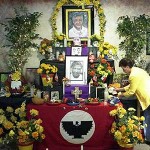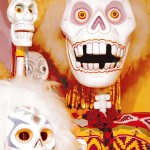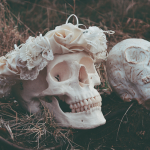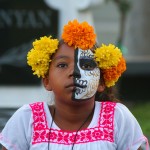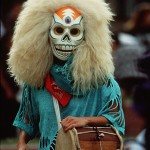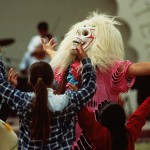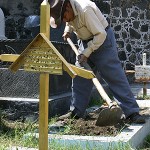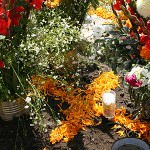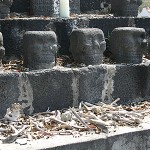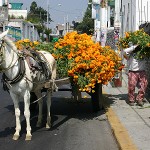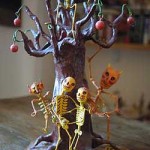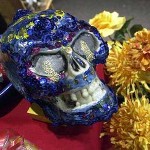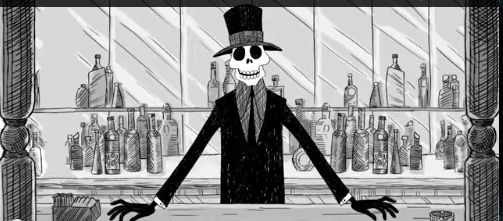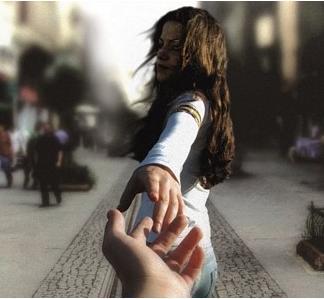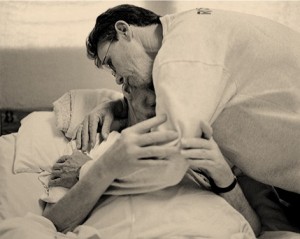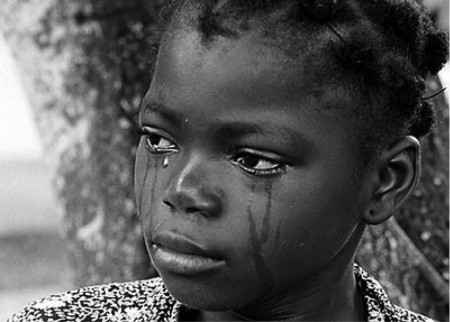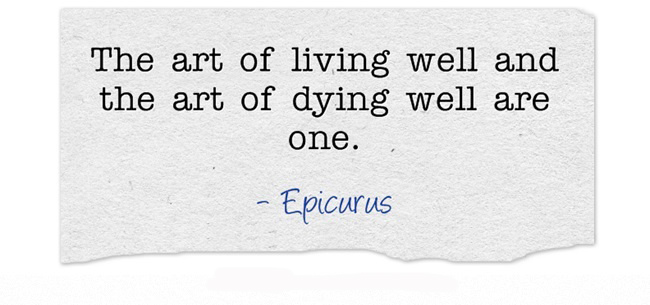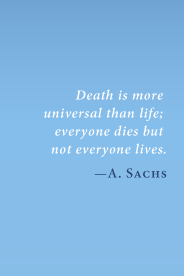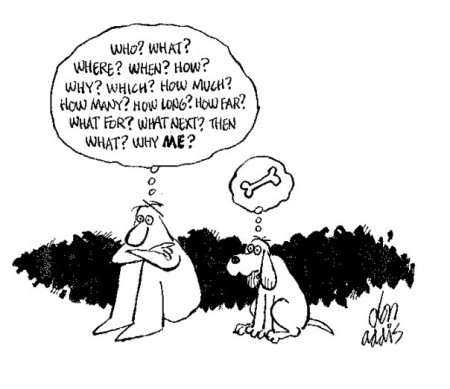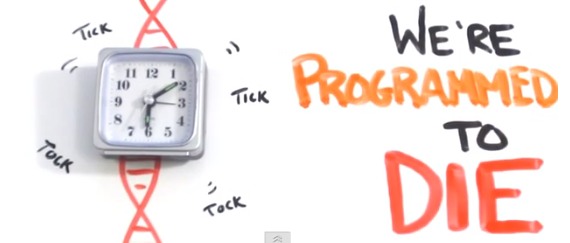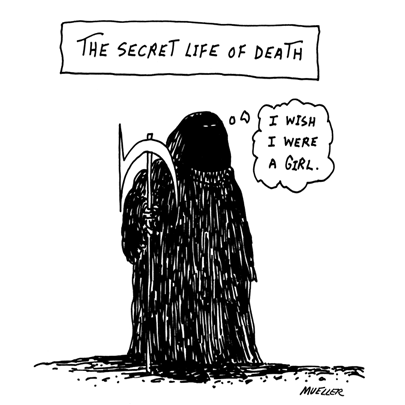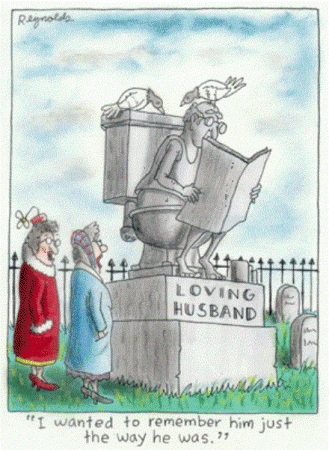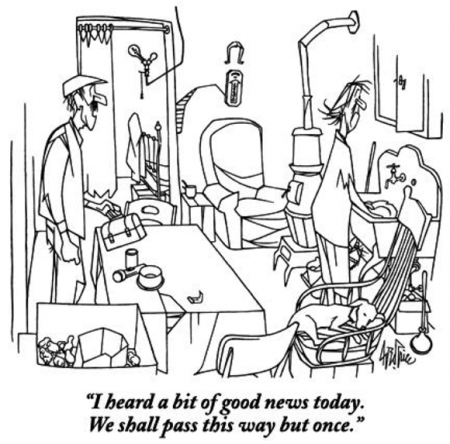The One God of the Near Eastern monotheisms— Judaism, Christianity, Islam—is both the creator and stern but loving father of humankind. He cares for his creation from birth to death and beyond. This is somewhat exceptional among world mythologies. Many creator gods are unbelievably remote in time and space: Maheo in the myths of the Cheyenne of the U.S. Great Plains existed before existence, and numerous creators are sky gods, such as Olorun, or “Sky,” in the myths of the Edo and Yoruba peoples of Nigeria.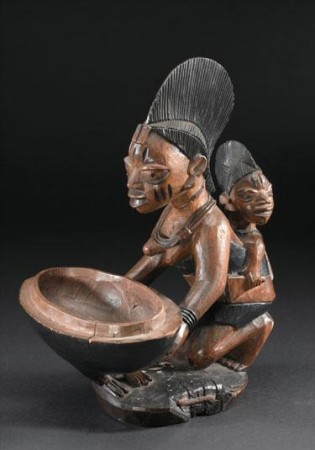
Although most peoples of the world preferred to believe that creation had a purpose, sometimes it was incidental or even accidental. Qamaits, warrior goddess of the Bella Coola people of the Northwest coast of Canada, killed off the primeval giants who ruled the earth, making room for other life forms merely as a by-product. Coniraya, one of the oldest of Inca gods, could not help but create: His mere touch made everything burst into life.
Such creators often take scant interest in their creation. Qamaits seldom concerned herself with the earth once she had killed the giants and perhaps humans as well; her rare visits caused earthquakes, forest fires, and epidemics. Other creator gods withdraw once the act of creation is over, leaving subordinates in charge. In Ugandan myth, the creator, Katonda, left his deputies Kibuka (war) and Walumbe (death), along with others, to rule his new universe.
The War Gods
War and death are an obvious pairing. Almost no one embraces death willingly, unless seduced by the evil songs of Kipu-Tyttö, Finnish goddess of illness, into joining her in the underworld of Tuonela. To express most people’s sense of death as a battle lost, death is pictured in many myths as a warrior: Rudrani, the Hindu “red princess,” who brings plague and death, and gorges on blood shed in battle; and Llamo, Tibetan goddess of disease, riding across the world, clad in her victims’ skins, firing her poison arrows. Because warriors give protection too, the ancient Greeks were ushered out of life by a gentler psychopomp (soul guide) than in most mythologies, the warrior god Thanatos, brother of Sleep, who escorted the dead to the gates of the underworld.
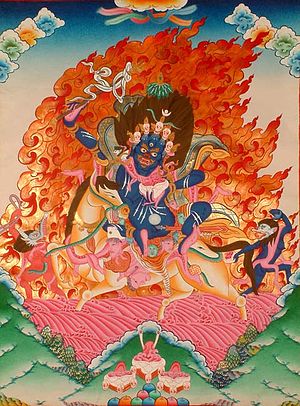 If war and death seem obvious allies, war and life seem contradictions. Yet it is precisely on the patrons of war, and other gods and goddesses envisaged as warriors, that the business of human life often rests. In most mythologies, the divine energy of the gods is seen as the great motive force of the universe. This energy may be analogous to that of a storm or some other powerful natural force, as in Egypt where the desert wind was personified as the lion-headed goddess Sekhmet, who when angry became the Eye of Ra, a terrible war goddess who swept over the land, scorching the earth in her wake.
If war and death seem obvious allies, war and life seem contradictions. Yet it is precisely on the patrons of war, and other gods and goddesses envisaged as warriors, that the business of human life often rests. In most mythologies, the divine energy of the gods is seen as the great motive force of the universe. This energy may be analogous to that of a storm or some other powerful natural force, as in Egypt where the desert wind was personified as the lion-headed goddess Sekhmet, who when angry became the Eye of Ra, a terrible war goddess who swept over the land, scorching the earth in her wake.
Just as human warriors are stronger and more active than most other people, war gods and goddesses generally embody pure energy: the Hindu goddess Durga is the anger of Shiva’s consort Parvati, just as Kartikeya (Skanda), Hindu god of armies, is the fierceness of Shiva himself. The divine vigor of these deities is barely contained: Sumerian Ninurta existed as power without form until his mother Ninhursaga confined it in the shape of an eagle-winged warrior. The same idea underlies the curious births of many war gods: Iranian Mithra, born from a rock; Greek Athene, springing from Zeus’s head; Kali, the Hindu death goddess, bursting from the forehead of Durga; and Kartikeya, born from the sparks that fell from Shiva’s eyes. They are eruptions into the universe of divine vitality.
Unsurprisingly, therefore, a number of war gods are themselves creators, like the Mesopotamian Marduk, 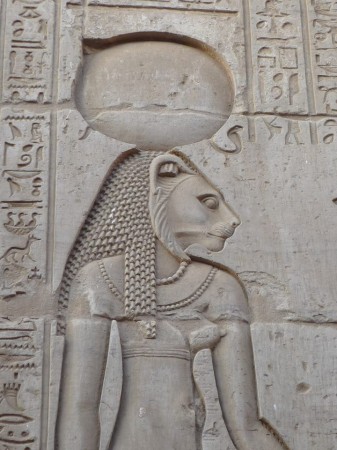 Mithra in ancient Iran, Min in Egypt, Vahagn in Armenian myth, Unkulunkulu of the Amazulu people of South Africa, and (inadvertently) Qamaits. Many more are deeply involved with the creative and intellectual growth of humankind, their myths saying something universal about the way civilizations develop. Except for the Greek Ares, portrayed as brawn without brain, the war gods are often great benefactors. Tools and weapons are the gifts of Gu, the blacksmith god of the Fon peoples of Dahomey, and of Ogun, venerated by the Yoruba as the power of iron. Craft-skills are bestowed by Greek Athene and Sumerian Ninurta, healing and medical skills by lion-headed Sekhmet and by Unkulunkulu, the Amazulu creator. Magical knowledge is the legacy of Norse Odin, prophecy of Baltic Svandovit. Justice and fair dealing are the province of Norse Tr and Roman Mars, sovereignty and rule of Celtic Medb, Germanic Teutatis, and both Mars and the Roman war goddess Bellona.
Mithra in ancient Iran, Min in Egypt, Vahagn in Armenian myth, Unkulunkulu of the Amazulu people of South Africa, and (inadvertently) Qamaits. Many more are deeply involved with the creative and intellectual growth of humankind, their myths saying something universal about the way civilizations develop. Except for the Greek Ares, portrayed as brawn without brain, the war gods are often great benefactors. Tools and weapons are the gifts of Gu, the blacksmith god of the Fon peoples of Dahomey, and of Ogun, venerated by the Yoruba as the power of iron. Craft-skills are bestowed by Greek Athene and Sumerian Ninurta, healing and medical skills by lion-headed Sekhmet and by Unkulunkulu, the Amazulu creator. Magical knowledge is the legacy of Norse Odin, prophecy of Baltic Svandovit. Justice and fair dealing are the province of Norse Tr and Roman Mars, sovereignty and rule of Celtic Medb, Germanic Teutatis, and both Mars and the Roman war goddess Bellona.
It is very often the war gods, too, who oversee the continuance of the human race, and indeed the ability of all living things to reproduce themselves. The myths say this in different ways. Several war gods and goddesses, notably the Greek Ares and the Celtic Medb, were notorious for their sexual appetites. Just as Ares coupled for preference with Aphrodite, so in Haitian voudun (voodoo), Ogoun enjoys sex with the love goddess Erzulie. The Mesopotamian Ishtar, goddess of sex, was in Assyria also the war goddess, to whom were offered the flayed skins and severed hands of prisoners.
This is less a commentary on the rape and pillage historically associated with invading armies than a reflection of a link between war gods and a broader notion of generation and fertility. Gu, in Dahomey, oversaw both fertility and war; Cihuacóatl, Great Goddess of the Aztecs, had charge of war and women’s fecundity. In particular instances, the link between war and fertility might arise from the war god’s dual role as sky and weather god, by analogy with the life-giving rain, as with Mars and Svandovit. Another line of development is represented by Hachiman, who began as aprotector of crops and children, came to protect the whole of Japan, and then became a war god.
Sex and Fertility
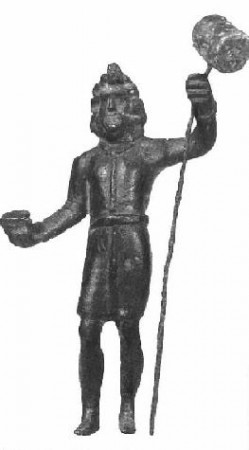 But war gods aside, a connection between sex/fertility and death is made in many mythologies from the most ancient past down to the present time. Nergal in Mesopotamia, embodied as a bull (a widespread symbol of virility), was notorious both for his sexual activity and also for dragging mortals off to the underworld; Sucellus, the “Good Striker,” in Celtic myth had a hammer which he used both to strike plenty from the ground and to hit dying people on the forehead to make death easier; Ghede, originally the Haitian god of love, was in later voudun belief amalgamated with Baron Samedi, the dancing god of death who was often questioned via blood sacrifice on questions of fertility.
But war gods aside, a connection between sex/fertility and death is made in many mythologies from the most ancient past down to the present time. Nergal in Mesopotamia, embodied as a bull (a widespread symbol of virility), was notorious both for his sexual activity and also for dragging mortals off to the underworld; Sucellus, the “Good Striker,” in Celtic myth had a hammer which he used both to strike plenty from the ground and to hit dying people on the forehead to make death easier; Ghede, originally the Haitian god of love, was in later voudun belief amalgamated with Baron Samedi, the dancing god of death who was often questioned via blood sacrifice on questions of fertility.
This link between sex and/or fertility and death is epitomized by Hathor, originally a fierce blood-drinking Nubian war goddess who wore the same lion-headed form as Sekhmet. When introduced into Egypt, she became the cow of plenty whose milk was the food of the gods and kept them fecund. It was Hathor, too, who entertained the sun god Ra on his nightly voyage through the underworld, and also guided souls to the court of the judge of the dead, Osiris.
Life and death are two sides of the same coin: Innanna, Sumerian goddess of sex and fertility, is the twin sister of Ereshkigal, queen of the underworld. They are not two but one, a dual goddess, light and dark. Consider the Irish myths of the Daghdha. Wise, associated with magic, like the war gods he was master of arts and skills. But he was also the gluttonous god of abundance and of fertility, coupling with Boann, the spirit of the river Boyne, as well as his wife Dana, and with the war goddess the Morrigan (significantly on New Year’s Day). He wielded a huge club—with the knobbed end killing the living, the other restoring the dead to life.
Other Aspects of Gods and Goddesses
Some mythologies have vanished; some have gone on to become world faiths. One of the survivors is Hinduism, which expresses its philosophy of life and death in the myth of Shiva, a warrior of vast strength, the most powerful being in the universe, armed with invincible weapons (including a bow made from the rainbow and a trident of thunderbolts). Like many war gods, he was born oddly,
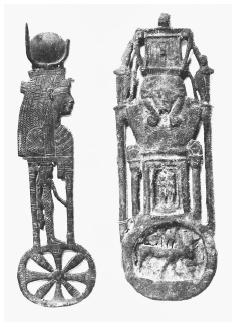
The connection between fertility and death is made in many mythologies. The orginal Nubian war goddess turned Egyptian fertility goddess, Hathor, is characterized by these labor amulets.
from a slit in a vast penis that appeared in the universe. (He is still honored in the form of a phallic stone column, the lingam.) At the same time, his titles include Kala (“Death”) and Nataraja (“Lord of the Dance”), because of the terrible dance he dances at the end of each cycle of the universe, when he opens his fearful third eye and unmakes the whole of creation. He is one of the three supreme deities: He destroys, Vishnu preserves, Brahma maintains balance. Together, they order the universe.Though many ancient mythologies explained how death came into the world, comparatively few promised a better life to come. Their underworlds were mostly gloomy places, into which the dead were thrust by hideous demons or fierce warrior-deities, and there either forgotten by their creator or made to stand trial before some dread underworld lord such as Osiris in Egypt or in Chinese Buddhist myth the Four Kings of Hell, who guard the Scrolls of Judgment in which all past lives are recorded. No wonder that many underworlds are filled with unhappy souls, like the spirits led by Gauna, death in the myths of the Bushmen of Botswana, who are so miserable in the world below that they keep trying to escape and take over the world above.
But several societies evolved myths of death and resurrection gods built on the analogy with plant life, which springs up and dies in an annual cycle. The Greeks told the story of Adonis, loved by both Aphrodite and the underworld goddess Persephone. When he was killed by a jealous Ares, scarlet anemones sprang up from drops of his blood. Zeus solved the rivalry between the goddesses by decreeing that Adonis should spend half his year with Aphrodite, half with Persephone in the underworld.
Death and resurrection gods form the background to the emergence in the Near East of mystery religions, so-called because only initiates knew their secrets. These extended the chance of a better hereafter beyond a close circle of special people, such as the pharaohs and nobles in Ancient Egypt afforded a kind of immortality by mummification; Greek heroes taken to the happy Isles of the Blest instead of gloomy Hades; and Norse warriors carried off the battlefield by Odin’s battle-maidens, the valkyries, to the everlasting feast in his mead-hall Vallhalla, whereas those who died in their beds were consigned to the dismal realm of the goddess Hel.
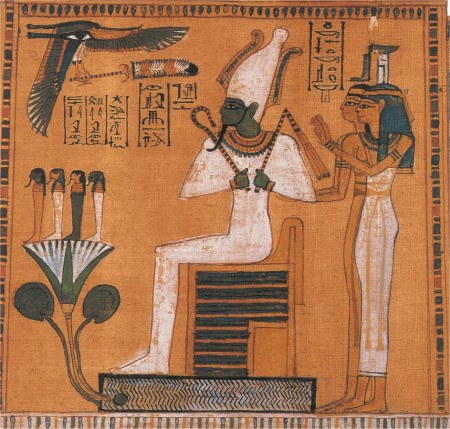 The mystery religions promised life after death to all believers. In Egypt, Aset (Isis), sister and consort of Osiris, by her magical skills reassembled the corpse of Osiris, after he was dismembered by his brother Set. However, the gods decreed that Osiris (perhaps because he could no longer function as a fertility deity, Aset having been unable to find his penis) should henceforth serve as judge of the dead in the underworld. From this evolved the Mysteries of Isis, a popular cult in Ptolemaic Egypt and Rome, from the first century B.C.E. to the fourth century C.E. At their initiation, devotees were told the secret name of the sun god Ra, which Isis won from him in order to revivify Osiris. They believed that knowing this name empowered them to conquer age and sickness, even death.
The mystery religions promised life after death to all believers. In Egypt, Aset (Isis), sister and consort of Osiris, by her magical skills reassembled the corpse of Osiris, after he was dismembered by his brother Set. However, the gods decreed that Osiris (perhaps because he could no longer function as a fertility deity, Aset having been unable to find his penis) should henceforth serve as judge of the dead in the underworld. From this evolved the Mysteries of Isis, a popular cult in Ptolemaic Egypt and Rome, from the first century B.C.E. to the fourth century C.E. At their initiation, devotees were told the secret name of the sun god Ra, which Isis won from him in order to revivify Osiris. They believed that knowing this name empowered them to conquer age and sickness, even death.
From Iran came the cult of the creator and war god Mithra who fought and killed the primeval bull, from whose blood and bone marrow sprang all vegetation. He eternally mediates on humankind’s behalf with his father, Ahura Mazda, the god of light, and combats the dark lord, Ahriman, the evil principle. This battle will end on Judgment Day with Mithra’s triumph. In ancient Rome, where he was known as Mithras, Mithra became the focus of a mystery religion practiced especially by soldiers. Initiation into his cult, as into that of Isis, was believed to ensure immortality. The cult never became widespread, partly because it was secret, partly because it was austere, but chiefly perhaps because it was closed to half the population—the women.
By contrast, Christianity spoke to both sexes. It outlasted both the Mysteries of Isis and those of Mithras, perhaps because the answer it gave to the question “What happens to me after death?” was the same for everyone, king or subject, master or slave, soldier or farmer, man or woman. Moreover, the bodily death and resurrection of Christ himself, prefiguring the triumph over death of all who believed in him, was said to have happened to a historical person within or almost within living memory, rather than to a god in some remote mythical time.
Complete Article HERE!

